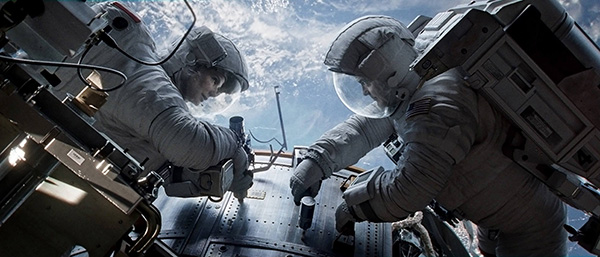
To truly experience the atmosphere of fear and despair that Alfonso Cuarón laboriously created in his science-fiction thriller “Gravity,” one must see the film in 3-D and in an Imax theater. The grand experience of the film demands to be seen in the most extravagant way possible.
When Cuarón first pitched his film about a scientist separated from her ship in the dead quiet of space, it was so ambitious that cinematographer Emmanuel Lubezki said the technology to film an entire movie in zero-gravity simply did not exist. Fortunately, the project gained momentum in 2010 when Warner Bros. acquired the rights. With a budget of $100 million, a lot rested on Cuarón’s shoulders, but he refused to make any compromises and opted for his signature long, continuous shots.
Although realistic space films like “Apollo 13” have previously been achieved through wires and blue screens, Cuarón’s style complicated this method. As a result, his team tapped into an innovative use of special effects. Cuarón flipped the script of similar films by shooting only the actors’ faces and creating everything else digitally, resulting in an almost completely computer-generated film.
The arduous filming process paid off, however, making for a film so thrilling that its excess rarely feels self-indulgent. With the opening shot consisting of a single 17-minute take and only 156 shots in total, “Gravity” could have been a superior case of style over substance. But Cuarón’s style only assists the film’s already terrific pacing and performances, particularly by Sandra Bullock, who gives one of the most emotional acting of her career. “Gravity’s” extravagance demands to be seen in theaters for full effect, and in an age where theaters feel less and less prominent, “Gravity” makes an impact.
A version of this article appeared in the Thursday, Dec. 5 print edition. Bob Teoh is a staff writer. Email him at [email protected].






















































































































































